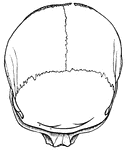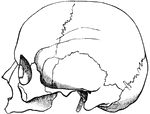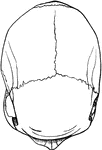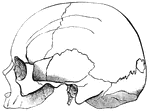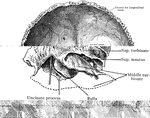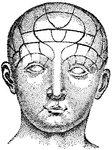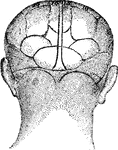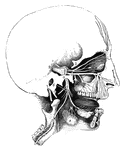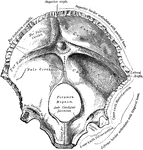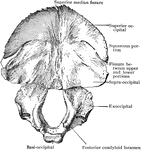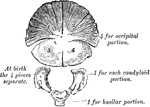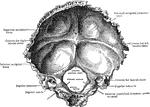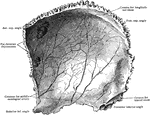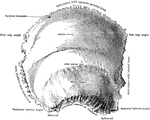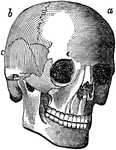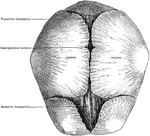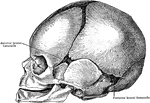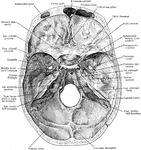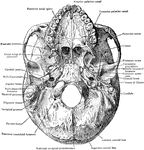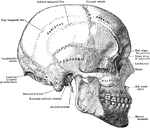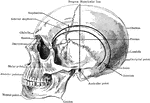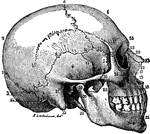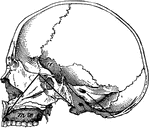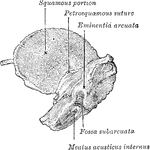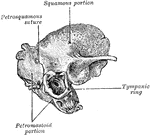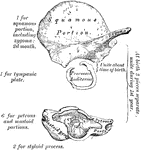Clipart tagged: ‘cranium’

Cranial Sutures
The bones of the top of the head are fastened together by what are called sutures which are locked together…
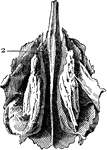
Ethmoid Bone of the Human Skull
Ethmoid bone, posterior surface. The ethmoid bone is an exceedingly light, spongy bone, placed between…

Frontal Bone of the Human Skull
Frontal bone of the human skull, outer surface. The frontal bone forms the forehead, roof of the orbital…
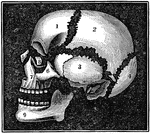
Bones of the Head
A diagram of the bones of the head. Label: 1, frontal lobe; 2, parietal bone; 3, temporal bone; 4, occipital…
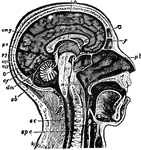
Human Brain
"The Brain is the encephalon, or center of the nervous system and the seat of consciousness and volition…

Mesotherium Cristatum
"Cranium and lower jaw of Mesotherium Cristatum." —The Encyclopedia Britannica, 1903
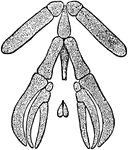
Hyoid and Branchial Apparatus of the Common Mudpuppy
The Common Mudpuppy (Necturus maculosus) is a species of aquatic salamander found throughout the northeastern…
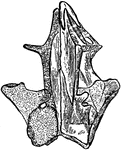
Cranium of the Common Mudpuppy (Dorsal View)
The Common Mudpuppy (Necturus maculosus) is a species of aquatic salamander found throughout the northeastern…

Cranium of the Common Mudpuppy (Lateral View)
The Common Mudpuppy (Necturus maculosus) is a species of aquatic salamander found throughout the northeastern…
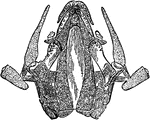
Cranium of the Common Mudpuppy (Ventral View)
The Common Mudpuppy (Necturus maculosus) is a species of aquatic salamander found throughout the northeastern…
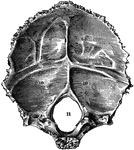
Occipital Bone of the Human Skull
Occipital bone of the human skull, inner surface. It is situated at the back and base of the skull.…
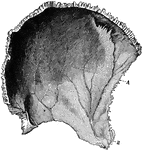
Parietal Bone of the Human Skull
Parietal bone of the human skull, inner surface. The parietal bones form the greater part of the sides…

Polypterus Skull
"Upper aspect of the primordial cranium, with the membrane-bones removed. An, angular; ao, anteorbital;…

Polypterus Skull
"Lower aspect of the primordial cranium, with the membrane-bones removed. An, angular; ao, anteorbital;…

Polypterus Skull
"Side view, with the membrane-bones. An, angular; ao, anteorbital; Ar, articulary; B, basal; D, dentary;…

Polypterus Skull
"Lower aspect of the skull, part of the bones being removed on the side. An, angular; ao, anteorbital;…
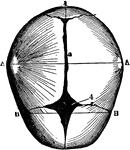
Human Skull at Birth
The skull at birth, superior suerface. The cranial bones of the infant at birth are not fullyformed…

Skull of a Hog
Longitudinal section of a hog's skull. 1, os rostri; 2, maxillary turbinal; 3, frontal turbinal; 4,…

Ox Skull
Skull of an ox, superior aspect. Labels: a, frontal crest; b, lateral crest; c, horn core; d, nasal…

Base of the Skull Seen From Above
Shown is the base of the skull seen from above. Labels: 1, frontal bone; 2, slit for nasal nerve; 3,…
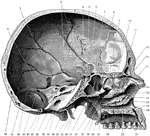
Skull Seen From Side
Shown is the inner aspect of the left half of the skull sagittally divided. Labels: 1, suture between…
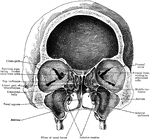
Frontal Section of Skull Showing Nasal Cavity
Front section of skull through plane of outer border of orbits. Arrows pass through communication between…
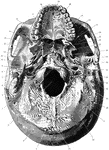
Base of the Skull
Shown is norma basalis, which refers to the base of the cranium. Labels: 1, external occipital crest;…
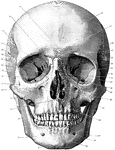
Front of the Skull
Shown is norma frontalis, which refers to the front of the skull. Labels: 1, mental protuberance; 2,…
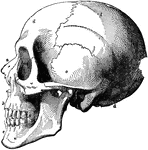
Human Skull
The skull. Labels: a, nasal bone; b, superior maxillary; c, inferior maxillary; d, occipital; e, temporal;…
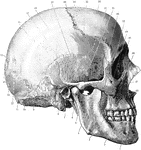
Side of the Skull
Shown is norma lateralis, which refers to the side of the skull. Labels: 1, mental foramen; 2, body…

Sphenoid Bone of the Human Skull
Sphenoid bone, situated the anterior part of the base of the skull, articulating with all the other…
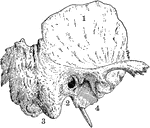
Temporal Bone of the Human Skull
Temporal bone of the human skull. The temporal bones are situated at the sides and base of the skull.…
